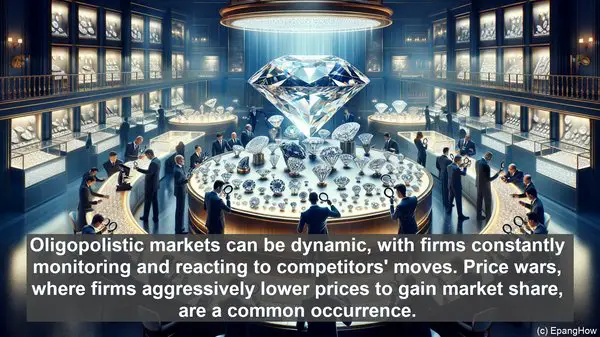Introduction: The Varied Market Landscape
Hello everyone! In the vast realm of economics, market structures play a crucial role. Today, we’ll be focusing on two intriguing ones: oligopoly and monopolistic competition. While both involve a degree of market power, they differ in several aspects. Let’s dive in!

Defining Oligopoly: Few Players, Significant Impact
Oligopoly refers to a market structure characterized by a handful of dominant firms. These firms hold considerable market share, often resulting in a high level of interdependence. Their actions, such as pricing or product decisions, significantly impact the market. Due to the limited number of players, there’s a potential for strategic interactions and even collusion, where firms cooperate to maximize joint profits.
Monopolistic Competition: Differentiation and Variety
In contrast, monopolistic competition involves numerous firms, each offering slightly differentiated products. This differentiation, be it through branding, features, or marketing, is a key strategy to attract customers. While firms in monopolistic competition have some control over their prices, the level of interdependence is relatively lower than in oligopoly. Entry and exit barriers are often low, allowing for relatively easy market entry.
Implications of Oligopoly: Balancing Act and Market Dynamics
Oligopolistic markets can be dynamic, with firms constantly monitoring and reacting to competitors’ moves. Price wars, where firms aggressively lower prices to gain market share, are a common occurrence. However, maintaining such low prices in the long term may not be sustainable, leading to potential market consolidation. Additionally, due to the significant market power held by oligopolies, their actions can have far-reaching effects, including on employment and industry trends.
Monopolistic Competition’s Impact: Innovation and Choices
The emphasis on product differentiation in monopolistic competition fosters innovation. Firms strive to create unique offerings, constantly improving and upgrading. This drive for differentiation benefits consumers, as they have a wide array of choices. However, the constant need to differentiate can also lead to increased costs, which may be passed on to customers.
Real-World Examples: Oligopoly and Monopolistic Competition
Oligopolies are prevalent in industries such as telecommunications, where a few major players dominate the market. Think of your mobile service providers. On the other hand, sectors like fast food or personal care products often exhibit monopolistic competition. The sheer number of brands and options available is a testament to this.

